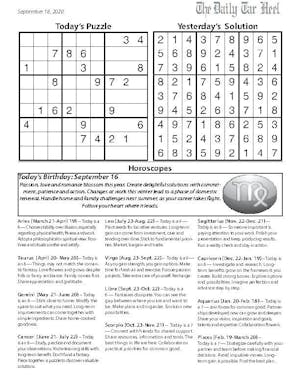The crisis in Ukraine may appear to have escalated to its height in 2013 and early 2014. But this might not be the case. A break of ceasefire in the Donetsk region and over 9,000 Russian troops in Ukraine seem to tell a different story.
The history of Ukraine’s relationship with Russia, and the resulting three key decisions, were explained by former ambassador to Ukraine, William Taylor, in a lecture on UNC's campus Tuesday. Taylor sought to help explain the ongoing crisis in Ukraine and the resulting sanctions by the U.S. and many European countries on Russia for their action in the volatile region.
The first decision began in 1991, when 12 former Soviet countries became independent from the Soviet Union, including Estonia, Lithuania, Latvia, Armenia and Azerbaijan.
Some of these countries vacillated to the western style of government, while others kept their former style of government — keeping many of the same leaders and elections prior to the break-up of the Soviet Union.
Ukraine, which Taylor said translates to “borderland,” did just that — continuing to vacillate between the two styles of government and ideology.
Taylor said that Ukraine made an attempt to move toward the more western, European-style governments in 2013 with its second major attempt to join the European Union. This move was likely what prompted Russian President Vladimir Putin to act.
Putin “woke up” to the events going on in Ukraine, Taylor said, which caused him to make a deal with the current Ukraine President Viktor Yanukovych — a deal that would lower the natural gas price and give the country $15 billion if he allied with Russia.
Yanukovych, with close ties to the eastern part of Ukraine and Russia, decided not to pursue EU membership, which upset many citizens — particularly in the western region of Ukraine. Protests erupted in winter of 2013 in Independence Square in Kiev, and Yanukovych brought in snipers to try and clear the square in 2014.
These plans largely failed. Yanukovych fled to Russia, the parliament collapsed and eventually a new president, Olexander Turchynov, replaced Yanukovych.
Shortly after, Russia sent troops and eventually annexed Crimea after a vote in Ukraine. The annexation, which President Barrack Obama condemned, led to continued escalation in Ukraine, as pro-Russian separatists fought against Ukrainians.
These actions have led to the third ongoing decision about how the U.S. should act with Russia (and the former Soviet countries) in light of the events in Ukraine.
The Ukrainian crisis is still ongoing. Taylor said there have been about 5,000 deaths in the past couple of months in the war, and active fighting continues in the Donetsk region despite a three week cease-fire, with 11 deaths last week.
These deaths prompted the current U.S. ambassador to Ukraine to call on Russia to end its military support to the region.
But Putin seems to have no such plans, despite the economic crisis facing Russia brought on by U.S. and European sanctions. The punishments have led to the inflation of the rouble, and falling oil prices internationally, a large part of Russia’s economy, has only worsened the crisis.
Despite this, Putin is reportedly planning on increasing spending for the armed forces by more than 30 percent in the next two years.
Taylor said Putin was unpredictable, and it was hard to know what his next move will be.
Obama also mentioned the Ukraine situation in his State of the Union.
“We’re upholding the principle that bigger nations can’t bully the small — by opposing Russian aggression, supporting Ukraine’s democracy, and reassuring our NATO allies,” he said.
NATO allies include some of the former Soviet Union countries, such as the small Baltic states of Estonia, Latvia and Lithuania. If the Soviet Union were to invade one of these, or other NATO members, the U.S. would be obligated to respond.
Because Ukraine is not a NATO member, the U.S. responded primarily with economic sanctions that have significantly impacted the Russian economy, but have not stopped the continued Russian armed military presence in Ukraine. More than 9,000 Russian troops remain in the troubled nation, and escalating violence seems to make an eventual confrontation between the U.S. and Russian leaders inevitable.
state@dailytarheel.com
To get the day's news and headlines in your inbox each morning, sign up for our email newsletters.



